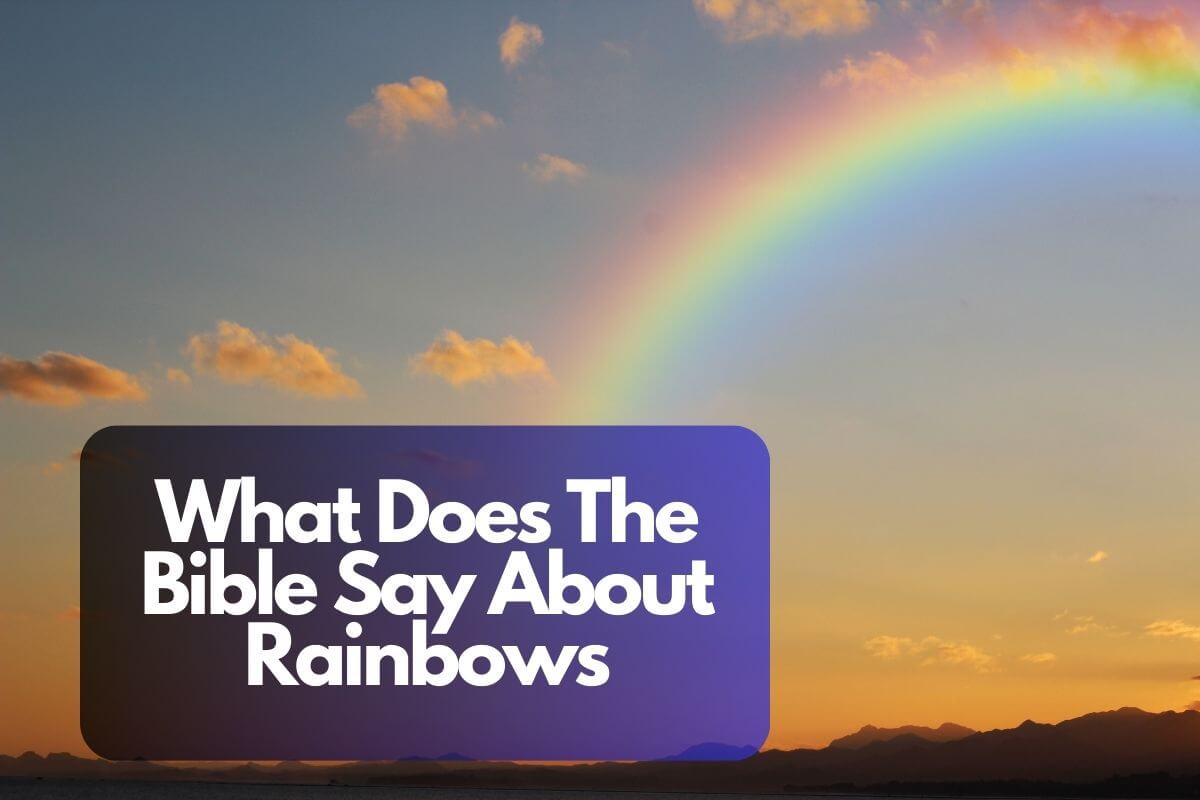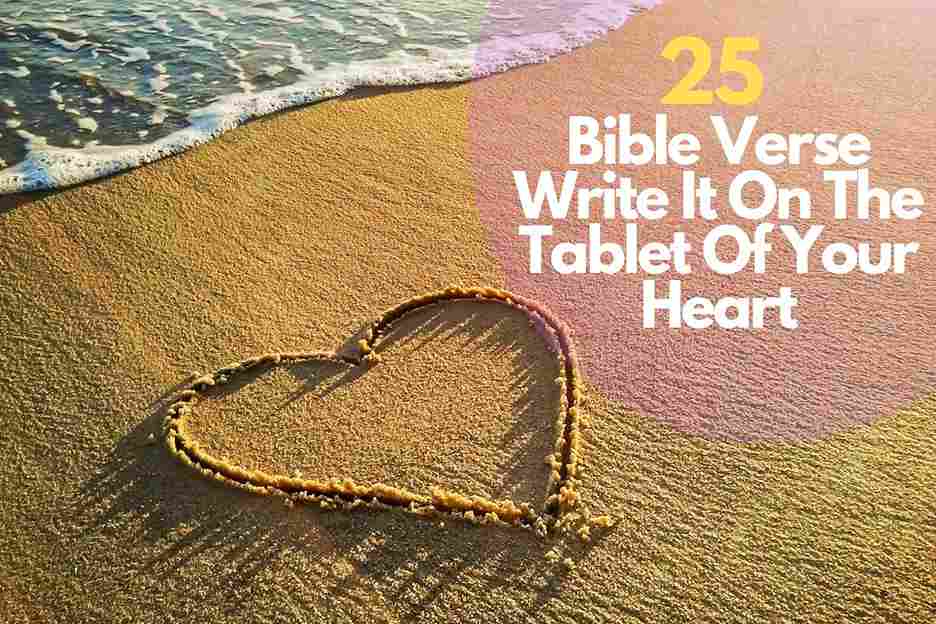Rainbows have always captivated the human imagination with their enchanting hues spread across the sky. But beyond their aesthetic beauty, these vibrant arcs of light hold deeper meanings and spiritual significance in various cultures and religions. In the realm of biblical literature, rainbows are not mere meteorological phenomena but powerful symbols that convey profound messages of promise, hope, and divine grace.
In this article, we will explore the biblical references to rainbows, unravel their significance, and delve into the spiritual lessons they impart. Join us on this enlightening journey as we discover what the Bible says about rainbows and uncover the hidden treasures of faith and the symbolism they hold.
What Does The Bible Say About Rainbows
The Bible mentions rainbows in the book of Genesis, specifically in Genesis 9:12-16. According to the biblical account, after the great flood that covered the earth, God made a covenant with Noah and all living creatures. As a sign of this covenant, God placed a rainbow in the sky.
The passage states that whenever it rains and a rainbow appears, it serves as a reminder of God’s covenant and his promise never to destroy the earth by a flood again. The rainbow is described as a symbol of God’s faithfulness, mercy, and grace.
Genesis 9:12-16 (New International Version)
And God said, ‘This is the sign of the covenant I am making between me and you and every living creature with you, a covenant for all generations to come: I have set my rainbow in the clouds, and it will be the sign of the covenant between me and the earth. Whenever I bring clouds over the earth and the rainbow appears in the clouds, I will remember my covenant between me and you and all living creatures of every kind.
Never again will the waters become a flood to destroy all life. Whenever the rainbow appears in the clouds, I will see it and remember the everlasting covenant between God and all living creatures of every kind on the earth.’
From this biblical passage, we understand that the rainbow holds significant symbolism in the Christian faith. It serves as a beautiful reminder of God’s faithfulness, his promise of protection, and his enduring love for all of humanity.
Brief explanation of the significance of rainbows
Rainbows have long held a special place in human fascination and cultural symbolism. They are captivating displays of vibrant colors that appear in the sky after rain showers or during misty conditions when sunlight interacts with water droplets. Rainbows are often associated with feelings of awe, wonder, and joy due to their ethereal beauty and the sense of enchantment they evoke.
Beyond their aesthetic appeal, rainbows have been imbued with symbolic significance in various cultures and belief systems throughout history. They have been seen as bridges between heaven and earth, mystical portals, or celestial signs of divine presence. In the context of the natural world, rainbows serve as reminders of the intricate interplay between light and water, showcasing the wonders of nature’s physics.
Transition into the biblical perspective on rainbows
Within the realm of biblical literature, rainbows hold a unique and profound significance. They are not merely meteorological phenomena but are rich in symbolic meaning, carrying messages of promise, hope, and divine intervention. The Bible offers insights into the origins of rainbows and provides a spiritual framework for understanding their symbolism.
The biblical perspective on rainbows is first introduced in the book of Genesis, which recounts the story of Noah and the Great Flood. According to the biblical narrative, after the floodwaters receded and Noah and his family emerged from the ark, God established a covenant with humanity. As a visible sign of this covenant, God set a rainbow in the sky, promising never to destroy the earth by flood again.
This divine act elevated the rainbow from a mere natural phenomenon to a symbol of God’s faithfulness, mercy, and grace. The biblical perspective on rainbows goes beyond their aesthetic appeal, inviting believers to contemplate the deeper spiritual truths they represent. By exploring the biblical references to rainbows, we can gain a deeper understanding of the messages of hope and divine promises that they convey.
The First Mention of Rainbows in the Bible
Reference to the first rainbow in Genesis
The first mention of rainbows in the Bible can be found in the book of Genesis, specifically in Genesis 9:12-16. After the devastating global flood, Noah, his family, and the animals that were preserved in the ark disembarked onto dry land. It is at this point that God establishes a covenant with Noah and all living creatures. As a sign of this covenant, God places a rainbow in the sky, stating:
“This is the sign of the covenant that I make between me and you and every living creature that is with you, for all future generations: I have set my bow in the cloud, and it shall be a sign of the covenant between me and the earth.” (Genesis 9:12-13, ESV)
Context and background of the story of Noah and the Flood
To understand the significance of the rainbow in this context, it is essential to grasp the backdrop of the story of Noah and the Flood. According to the biblical account, humanity had become exceedingly corrupt, and God decided to bring judgment upon the earth through a catastrophic flood. However, Noah, a righteous man, found favor in the eyes of the Lord.
God instructed Noah to build an ark and gather two of every kind of living creature, as well as his family, in order to preserve them from the impending floodwaters. The flood lasted for forty days and nights, during which time everything outside the ark perished. Only Noah, his family, and the animals aboard the ark were saved.
After the floodwaters receded and Noah and his family stepped onto dry land, God made a covenant with them, promising never to destroy the earth by a flood of the same magnitude again.
The covenant between God and Noah symbolized by the rainbow
The rainbow serves as a tangible sign of the covenant established between God and Noah. God explains the significance of the rainbow, saying:
“When I bring clouds over the earth and the bow is seen in the clouds, I will remember my covenant that is between me and you and every living creature of all flesh. And the waters shall never again become a flood to destroy all flesh.” (Genesis 9:14-15, ESV)
The rainbow, therefore, acts as a reminder to God of His covenant and a visual assurance to humanity and all living creatures of His faithfulness and promise to protect and preserve the earth.
The covenant symbolized by the rainbow signifies God’s enduring commitment to His creation, demonstrating His mercy and grace. It showcases His desire for reconciliation and His intention to establish a relationship with humanity based on love and covenantal faithfulness.
The significance of the rainbow as a symbol of divine promise and protection extends beyond the immediate context of Noah and the Flood. It carries timeless spiritual truths that resonate with believers, reminding them of God’s unwavering love and faithfulness in the face of challenges and difficulties. The rainbow serves as a powerful symbol of hope, restoration, and the assurance that God keeps His promises.
The Symbolism of Rainbows in the Bible
Symbolic representation of God’s promises
Rainbows in the Bible serve as symbolic representations of God’s promises to His people. They are visual reminders of the faithfulness and trustworthiness of God’s word. Just as the rainbow spans across the sky, God’s promises span across time and space, encompassing His provision, protection, and blessings.
Throughout the Bible, God makes numerous promises to His people, ranging from the promise of a Savior to the promise of eternal life. The rainbow symbolizes the assurance that God will fulfill these promises and remain steadfast in His commitment to His people.
The rainbow as a sign of God’s faithfulness
The presence of a rainbow serves as a visible sign of God’s faithfulness. In the story of Noah, God established a covenant with humanity, promising never to destroy the earth by a flood again. The rainbow serves as a perpetual reminder of God’s faithfulness to uphold His end of the covenant.
Whenever people see a rainbow, they are reminded of God’s unwavering faithfulness in keeping His promises. It serves as a source of comfort and encouragement, especially during challenging times when faith may be tested. The rainbow assures believers that just as God has faithfully fulfilled His promises in the past, He will continue to be faithful in the future.
The rainbow as a reminder of God’s mercy and grace
The rainbow also represents God’s mercy and grace towards humanity. In the story of Noah, the floodwaters brought destruction and judgment upon the earth. However, God’s mercy shone through in His decision to spare Noah and his family, preserving them in the ark.
The rainbow serves as a reminder of God’s mercy in providing a means of salvation and His grace in extending an opportunity for repentance and redemption. It symbolizes God’s compassion towards His creation, offering forgiveness and a fresh start.
In the New Testament, the rainbow takes on a deeper significance with the advent of Jesus Christ. Jesus, as the embodiment of God’s mercy and grace, fulfills the promises of salvation and reconciliation. The rainbow, in light of Christ’s redemptive work, serves as a reminder of God’s ultimate act of mercy and grace through the sacrifice of His Son.
Rainbows in Prophetic and Apocalyptic Literature
Mention of rainbows in visions and prophecies
Rainbows are not only found in the historical accounts of the Bible but also appear in prophetic and apocalyptic literature. In various visions and prophecies, rainbows are mentioned as significant elements that convey profound spiritual truths.
Symbolic meanings attached to rainbows in prophetic texts
In prophetic literature, rainbows often carry symbolic meanings that amplify the messages being communicated. For example, in the book of Ezekiel, the prophet describes a vision in which he sees a likeness of the glory of the Lord. In this vision, Ezekiel sees a rainbow surrounding the throne-like appearance of God, emphasizing the divine presence and majesty (Ezekiel 1:28).
In another instance, the prophet Isaiah speaks of the Messiah and the establishment of His reign. Isaiah 54:9 declares, “This is like the days of Noah to me: as I swore that the waters of Noah should no more go over the earth, so I have sworn that I will not be angry with you, and will not rebuke you.” Here, the reference to the days of Noah and the covenant associated with the rainbow highlights the enduring nature of God’s promises and the restoration that the Messiah brings.
Rainbows in the book of Revelation and their significance
The book of Revelation, an apocalyptic text, contains vivid imagery and powerful symbolism, including references to rainbows. In Revelation 4:3, the apostle John describes a vision of the throne room of God, where he sees “a rainbow that shone like an emerald.” The presence of the rainbow in this context signifies the glory, beauty, and divine authority of God. It serves as a reminder of the covenantal faithfulness of God and His ultimate sovereignty over all creation.
Furthermore, in Revelation 10:1, John witnesses another vision in which he sees “a mighty angel coming down from heaven, wrapped in a cloud, with a rainbow over his head.” The rainbow here represents the angel’s connection to God’s divine authority and power. It signifies the fulfillment of God’s purposes and the imminent proclamation of His judgments and salvation.
In both instances, the rainbows in the book of Revelation symbolize the transcendence and majesty of God, His covenantal faithfulness, and the unfolding of His divine plan. They serve as visual reminders of the profound spiritual realities that John is privileged to witness and communicate.
Lessons and Spiritual Insights from Biblical Rainbows
Trusting in God’s promises through the symbolism of rainbows
The symbolism of rainbows in the Bible invites believers to trust in the promises of God. Just as the rainbow serves as a visible sign of God’s covenant with Noah, it reminds us of God’s faithfulness to fulfill His word. When faced with challenges or uncertainties, the presence of rainbows encourages us to place our trust in God’s promises, knowing that He is steadfast and true to His word.
Finding hope and comfort in the presence of rainbows
Rainbows carry a message of hope and comfort in the biblical narrative. In the story of Noah, the rainbow appears after a period of immense devastation, signifying God’s mercy and the restoration of His creation. Similarly, in our own lives, rainbows can serve as reminders that even in the midst of storms and trials, God is present, bringing hope and the promise of better days ahead. The vibrant colors of the rainbow remind us that beauty can emerge from challenging circumstances, and that God’s light shines through even the darkest moments.
Understanding the divine attributes revealed through rainbows
The symbolism of rainbows in the Bible reveals certain divine attributes of God. The rainbow showcases God’s faithfulness, as it is a tangible sign of His enduring commitment to His people. It demonstrates His mercy, as it represents the covenantal promise not to destroy the earth by flood again. The rainbow also reveals God’s creative power and beauty, as it displays the harmonious blend of colors woven together.
Furthermore, the rainbow points to God’s sovereignty and authority, as it signifies His dominion over the earth and His control over natural phenomena. It reminds us of His grace, for the presence of a rainbow assures us of His love and forgiveness.
By contemplating the symbolism of rainbows, believers can deepen their understanding of these divine attributes and develop a greater appreciation for God’s character and His work in their lives.
Contemporary Interpretations and Applications
Various interpretations of rainbows in different Christian traditions
Within different Christian traditions, there may be variations in the interpretations of rainbows. Some may focus more on the literal historical account of Noah and the Flood, seeing the rainbow primarily as a reminder of God’s covenant in that specific context. Others may explore broader symbolic meanings, emphasizing themes such as hope, reconciliation, and the beauty of God’s creation.
It is important to respect and appreciate the diversity of interpretations within Christian traditions while recognizing the common threads that unite believers in their understanding of the overarching messages conveyed by rainbows.
Applying the lessons from biblical rainbows to modern-day faith
The lessons derived from biblical rainbows can have meaningful applications in modern-day faith. Believers can apply these lessons by:
1. Trusting in God’s promises: Just as God’s covenant with Noah was marked by the rainbow, we can trust in God’s promises today. We can hold onto His word, relying on His faithfulness and allowing it to guide our decisions and actions.
2. Finding hope and comfort: In times of difficulty, the presence of rainbows can serve as a source of hope and comfort. They remind us that God’s faithfulness and redemptive power are ever-present, even in the midst of challenges. We can find strength and encouragement in knowing that God’s promises remain true.
3. Embracing divine attributes: The symbolism of rainbows helps us to appreciate and embrace the divine attributes of God, such as His faithfulness, mercy, grace, and creative power. As we encounter rainbows, we can reflect on these attributes and seek to embody them in our own lives, extending love, forgiveness, and compassion to others.
Encouragement to embrace the symbolism of rainbows in personal spiritual journeys
In personal spiritual journeys, it can be valuable to intentionally embrace the symbolism of rainbows. This can involve seeking out opportunities to reflect on the lessons and spiritual insights associated with rainbows. It may include meditating on the symbolism of rainbows during times of prayer, contemplating their significance in moments of awe and wonder, or even incorporating visual reminders of rainbows in personal spaces as a way to invite spiritual reflection.
By intentionally embracing the symbolism of rainbows, believers can deepen their connection with God, find inspiration in His promises, and draw strength from the timeless messages conveyed by these beautiful natural phenomena.
Conclusion
Throughout this exploration of rainbows in the Bible, we have delved into various aspects of their significance. We began by discussing the first mention of rainbows in Genesis, particularly in the context of Noah and the Flood. We then examined the symbolism of rainbows, highlighting their representation of God’s promises, faithfulness, and mercy. Additionally, we explored their presence in prophetic and apocalyptic literature, recognizing their symbolic meanings in visions and prophecies. Furthermore, we considered the lessons and spiritual insights that rainbows offer, including trusting in God’s promises, finding hope and comfort, and understanding divine attributes. Finally, we discussed contemporary interpretations and applications of rainbows in modern-day faith.
As we conclude, I encourage you to continue exploring the rich symbolism of rainbows in the Bible. Dive deeper into the biblical accounts and reflect on the messages they convey. Allow the rainbow to serve as a reminder of God’s faithfulness, mercy, and love in your own life. Take time to meditate on its significance and the lessons it offers.
Rainbows have a timeless and enduring relevance in faith and spirituality. They serve as reminders of God’s promises, faithfulness, and the redemptive work of Christ. Whether in ancient biblical accounts or in contemporary interpretations, rainbows continue to inspire and guide believers in their spiritual journeys. Their symbolism invites us to trust in God, find hope in difficult times, and embrace the attributes of God in our interactions with others. May we always cherish the beauty and symbolism of rainbows, allowing them to deepen our faith and draw us closer to the divine.
Remember, as you navigate your spiritual path, the rainbow stands as a symbol of hope, reminding you of God’s promises and His presence in every season of life.







